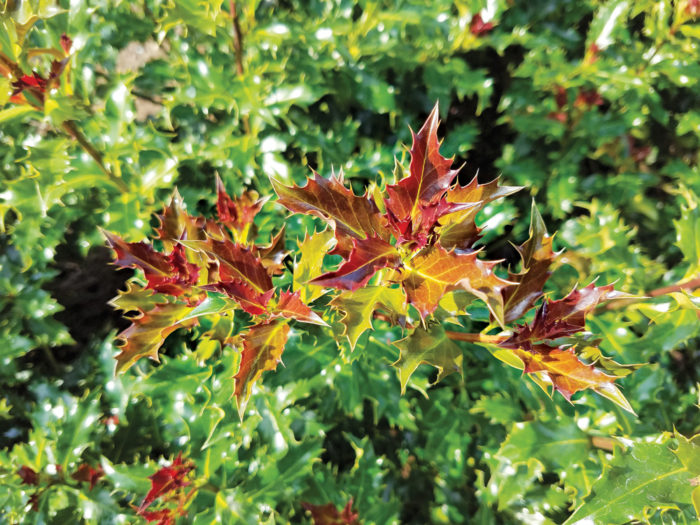
New plants. Has there ever been a more alluring pairing of words for gardeners? My answer is a hearty N-O. Like most gardeners with a pulse, the staff here at Fine Gardening get so excited about new varieties being introduced that we sometimes have trouble focusing as the press releases and stunning photos roll in. This year’s crop of newbies did not disappoint. There are a couple of exciting and superhardy hydrangeas, a perennial and a shrub that are so fragrant you might be able to smell them through the pages (I wish we could afford scratch-and-sniff technology here at FG), and of course a plethora of cultivars with improved habits or disease resistance. The only problem with this year’s introductions is the room you’ll have to make in your garden (and budget) to have them.
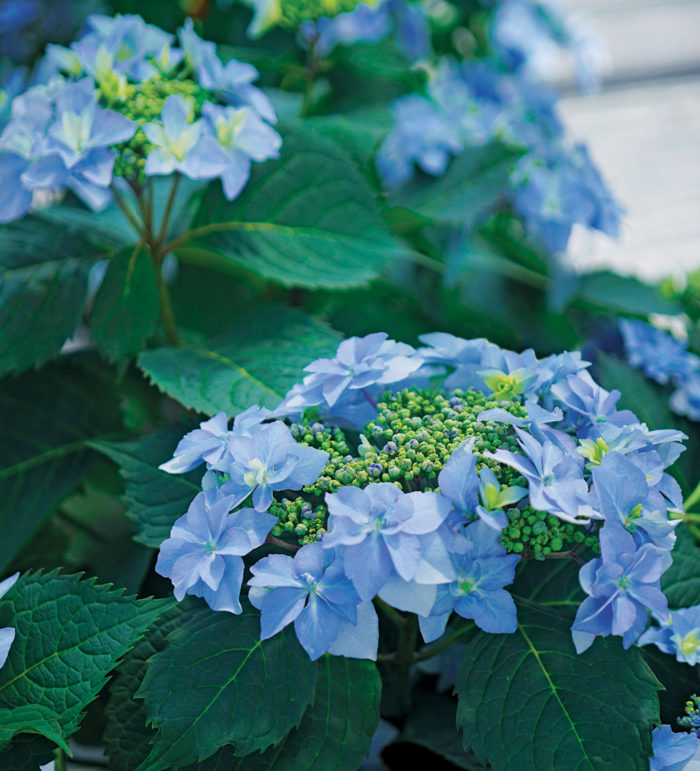
A novel look for a resilient hydrangea
Tuff Stuff Ah-Ha® mountain hydrangea (Hydrangea serrata ‘SMNHSDD’)
Zones: 5–9
Size: 2 to 3 feet tall and wide
Conditions: Partial shade; moist, well-drained soil
Native Range: Japan
Mountain hydrangeas as a group have much better cold hardiness, and their buds generally break later, than bigleaf types (H. macrophylla), so it’s no surprise that this variety seems to bloom reliably despite cool temperatures in early spring. Its blossoms have been compared to those of waterlilies, but to us, they look like clusters of shooting stars. It is said to rebloom sporadically throughout summer and into fall.
Introduced by Proven Winners® Color Choice®

Perhaps the most fragrant lilac you’ve sniffed.
Scentara® Double Blue lilac (Syringa hyacinthiflora ‘SMNSHBBL’)
Zones: 2–8
Size: 6 to 8 feet tall and wide
Conditions: Full sun to partial shade; moist, well-drained soil
Native Range: Southeastern Europe
The best thing about lilacs is their fragrance, hands down. So when a variety is developed in an effort to make it the most fragrant lilac, we applaud the effort. Purported to have excellent disease resistance (from powdery mildew in particular), this lilac is also deer resistant. A huge zonal range makes this a shrub or small tree with a lot going for it.
Introduced by Proven Winners® Color Choice®

An evergreen that’s not all green.
Mademoiselle™ holly (Ilex × meserveae ‘Madez’)
Zones: 5–7
Size: 12 to 15 feet tall and 8 to 10 feet wide
Conditions: Full sun to partial shade; well-drained soil
Native Range: Europe, western Asia, and North Africa
The new growth of this holly is what sets it apart. In early spring, the shrub pushes a set of chocolate-burgundy leaves that eventually darken to green. Red berries show up in late fall and carry through winter. Excellent disease resistance is another bonus of this hearty holly.
Introduced by UpShoot LLC
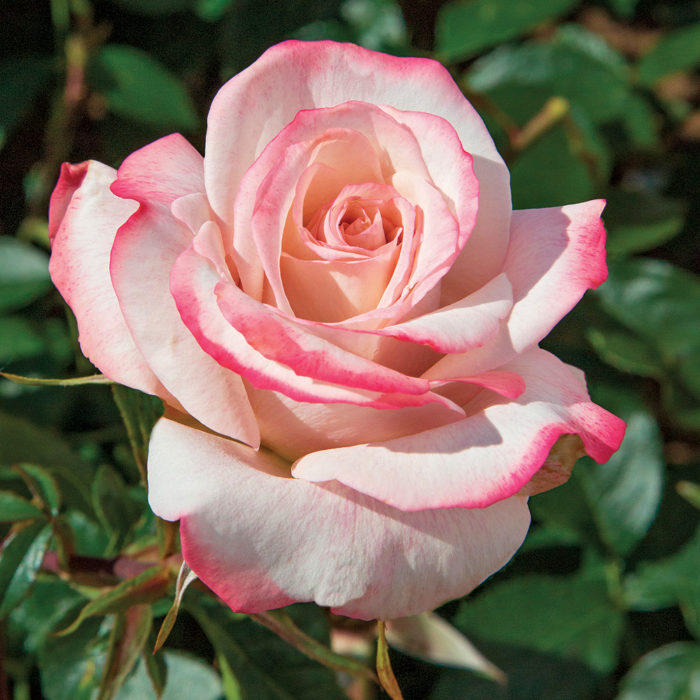
This hybrid tea rose is tougher than most.
Pinkerbelle™ rose (Rosa ‘Meivanae’)
Zones: 5–9
Size: 5 feet tall and wide
Conditions: Full sun; moist, well-drained soil
Native Range: Asia
If you’ve been avoiding hybrid tea roses for years because they tend to become a disease-ridden mess in your garden, this might be the rose to give tea roses a better name. According to the breeders, this fragrant baby, grown on its own roots, is pretty tough. It resists fungal infections even in areas of the country prone to black spot, so we can’t wait to put it to the test in Connecticut.
Introduced by Star® Roses & Plants

We’ve never seen a hydrangea like this
Green Cloud bigleaf hydrangea (Hydrangea macrophylla ‘Hortmagreclo’)
Zones: 5–9
Size: 3 to 4 feet tall and wide
Conditions: Partial shade; moist, well-drained soil
Native Range: Japan
The novel blossom color on this hydrangea might not be everyone’s cup of tea, but it’s certainly unique. We think that if given the proper companions, the lime green blooms would create a dynamic focal point. The flowers eventually transition to a deep pinkish red (much like H. paniculata). The sturdy stems will stand up to all sorts of foul weather conditions without flopping or breaking, making this variety excellent as a cut flower.
Introduced by Plants Nouveau

Its back side is nearly as beautiful as its blooms
Flip Side® vitex (Vitex ‘Bailtexone’)
Zones: 7–9
Size: 6 to 8 feet tall and 8 to 10 feet wide
Conditions: Full sun; moist, well-drained soil
Native Range: Asia and Australia
This new vitex keeps all the traits you’ve come to know and love from the genus—large, fragrant purple blooms and attractive gray foliage—and kicks things up a notch by adding a purple underside to each of the leaves. This sizeable shrub is a hybrid between Vitex trifolia ‘Purpurea’ and V. agnus-castus. Pollinators flock to it, deer leave it alone, and its habit is more compact than that of either of its parents.
Introduced by Bailey Nurseries
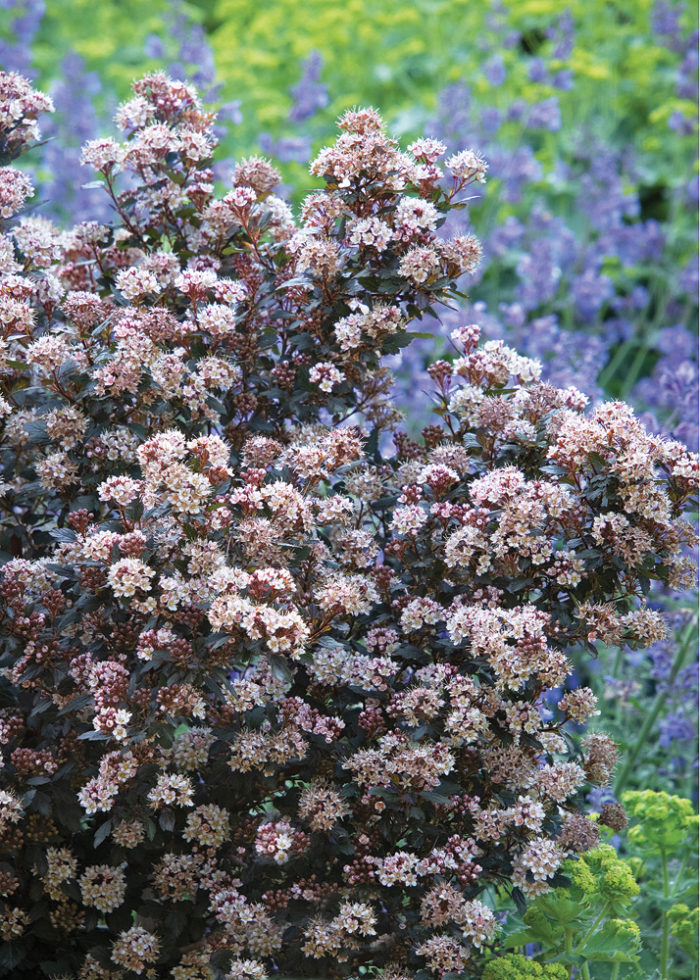
A dwarf shrub with full-size flower power
Little Joker® ninebark (Physocarpus opulifolius ‘Hoogi021’)
Zones: 4–8
Size: 3 to 4 feet tall and wide
Conditions: Full sun; well-drained soil
Native Range: Central and eastern North America
Little Joker® is the latest addition to the slew of dwarf ninebarks that have hit garden center shelves recently. This offering has the same petite stature and finely dissected burgundy leaves as other ninebarks, but the blossoms are bigger and much more numerous. A resistance to powdery mildew is another great selling point.
Introduced by Monrovia®
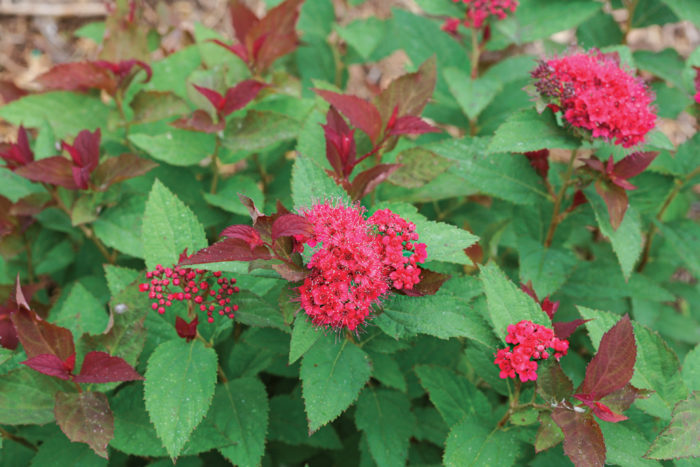
Yes way! It’s a seedless spirea
Double Play Doozie® spirea (Spiraea ‘NCSX2’)
Zones: 3–8
Size: 2 to 3 feet tall and wide
Conditions: Full sun; well-drained soil
Native Range: Japan and eastern Asia
If you have ever wished for a spirea that has all the toughness of the species without the invasive tendencies, wish no more. Double Play Doozie® is seedless, meaning it won’t take over your garden with thousands of uninvited progeny. It does, however, sport lovely burgundy spring growth and gorgeous magenta blooms in late spring and into summer.
Introduced by Proven Winners® Color Choice®
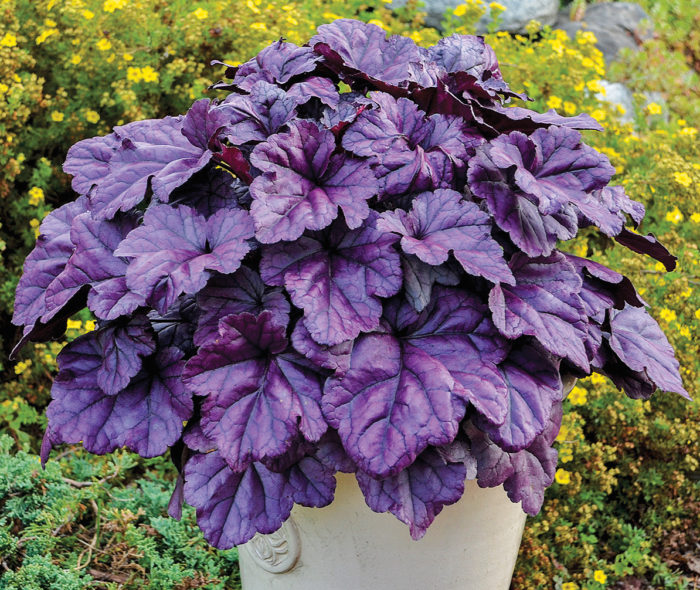
This heuchera’s hue doesn’t fade
‘Wildberry’ heuchera (Heuchera ‘Wildberry’)
Zones: 4–9
Size: 10 to 14 inches tall and 16 to 20 inches wide
Conditions: Full sun to partial shade; moist, well-drained soil
Native Range: North America
For years the downfall of new heucheras was their questionable winter hardiness. Plant breeders finally got a handle on that, but it seemed to be at the expense of plants holding their brilliant foliage colors. ‘Wildberry’ supposedly holds its deep purple hue throughout the season (even in full sun), and this color won’t fade as the season progresses, either.
Introduced by Proven Winners® and Walter’s Gardens

Silvery goodness to lighten the shade
Alchemy™ Silver brunnera (Brunnera macrophylla ‘TNBRUAS’)
Zones: 4–9
Size: 14 to 18 inches tall and wide
Conditions: Partial to full shade; moist, well-drained soil
Native Range: Turkey
This brunnera is touted as being bulkier than other offerings out there. The plant crown fills in quickly instead of limping along for years. Also, the bright silver color holds up well in the North and also in the heat and humidity of the South.
Introduced by Terra Nova® Nurseries

It’s a hardy, semi-evergreen clematis with yellow blooms—sign us up
Otophora clematis (Clematis otophora)
Zones: 5–9
Size: Climbing 10 to 12 feet
Conditions: Full sun to partial shade; moist, well-drained soil
Native Range: China
It should come as no surprise that the extraordinary plant hunters from Far Reaches Farm are responsible for bringing this plant to light. It’s everything we ever wanted (but didn’t know we wanted) in a clematis and more. The bright green oval-shape leaves are slightly waxy and may stay put in warmer areas. Though quick to bulk up, it doesn’t take over aggressively as it twines its way up a support system or through other scaffolding trees and shrubs. Then in early fall, 1-inch buttercup yellow, bell-shape blooms cover the vine, eventually giving way to large, fluffy seed heads. If ever there was a
conversation-piece plant, this is it.
Introduced by Far Reaches Farm
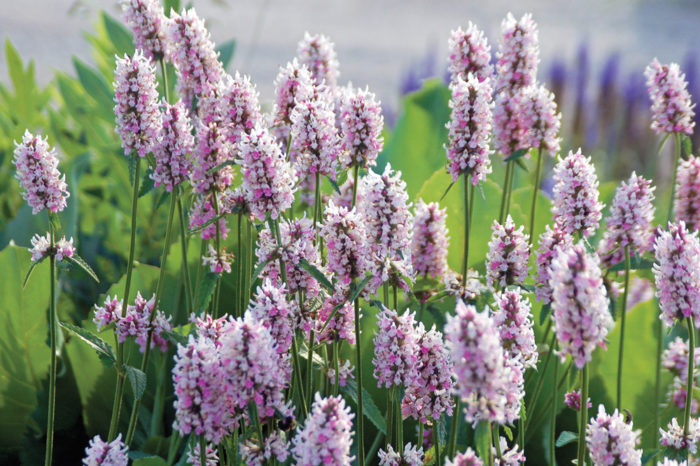
An underrated plant in a delightful new color
‘Summer Crush’ betony (Stachys ‘Summer Crush’)
Zones: 4–9
Size: 2 feet tall and wide
Conditions: Full sun; well-drained soil
Native Range: North America
Why folks don’t plant more betonies is a mystery. They’re drought tolerant, they like lean soil, they’re disease free, and deer leave them alone. The only downfall has been the limited flower colors. ‘Summer Crush’ solves that with its light-pink-and-white blooms. Did we mention that the blossoms keep coming for nearly a month? Bingo.
Introduced by Intrinsic Perennial Gardens
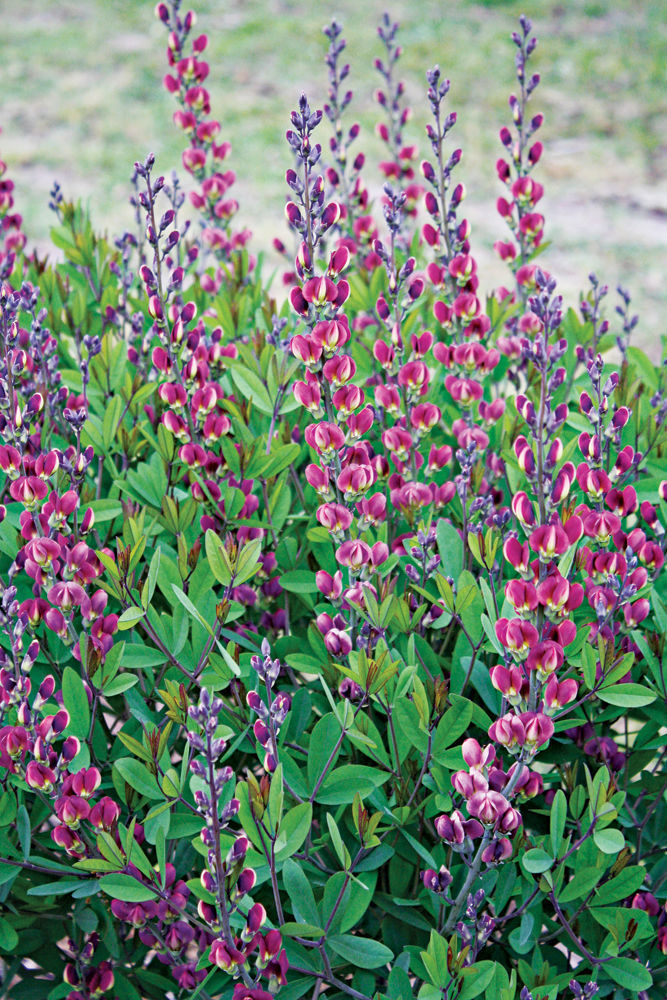
A color breakthrough for a popular perennial
‘Cherry Pie’ baptisia (Baptisia ‘Cherry Pie’)
Zones: 4–9
Size: 32 inches tall and 48 inches wide
Conditions: Full sun; well-drained soil
Native Range: North America
There’s never been a red baptisia before, so this is a must-have plant for 2019. ‘Cherry Pie’ has the same drought resistance and lovely glaucous pealike foliage you’ve come to know and love, but it’s the long-lasting red flower spikes that set it apart. As they age, you may see some fading of the hue, but even so, we’re excited.
Introduced by Plant Delights Nursery
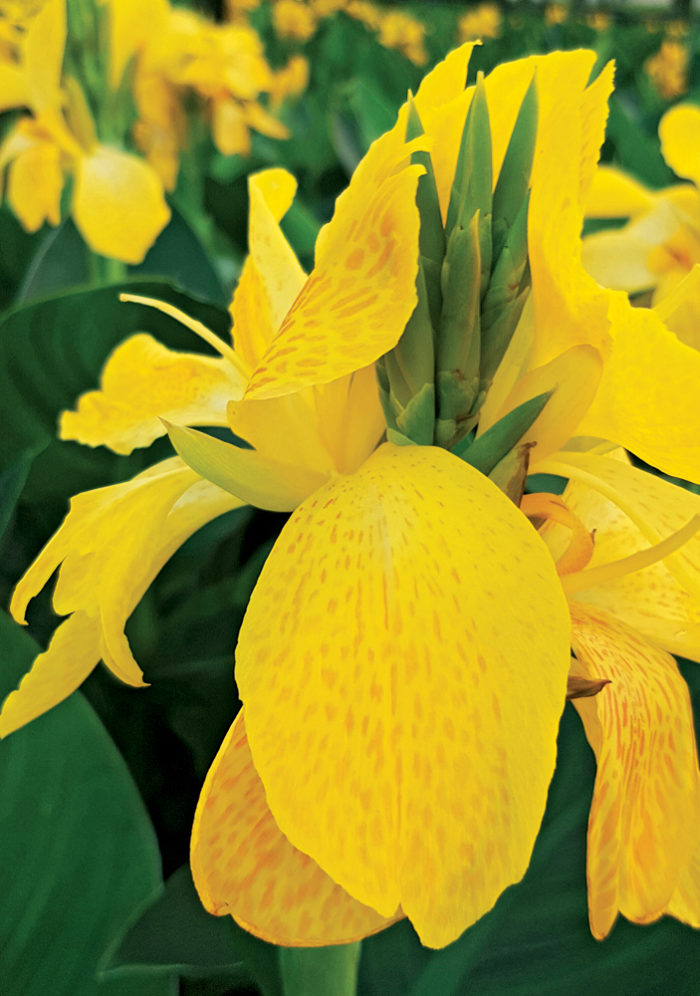
You won’t want to cut off this canna’s blooms
‘Lemon & Gin’ canna (Canna flaccida ‘Lemon & Gin’)
Zones: 7–9
Size: 2 to 3 feet tall and 1 foot wide
Conditions: Full sun; moist, well-drained soil
Native Range: Wetlands in the southern United States
Although they may not admit it, many gardeners snip the blooms off their cannas because, let’s face it, the foliage is great but the blooms are ugly. ‘Lemon & Gin’, however, truly is a canna that should be grown for its speckled, bright yellow blooms. They’re big, they’re numerous, and they’re certainly eye-catching. The large, deep green leaves make for the perfect nondescript background, too.
Introduced by J. Berry Nursery
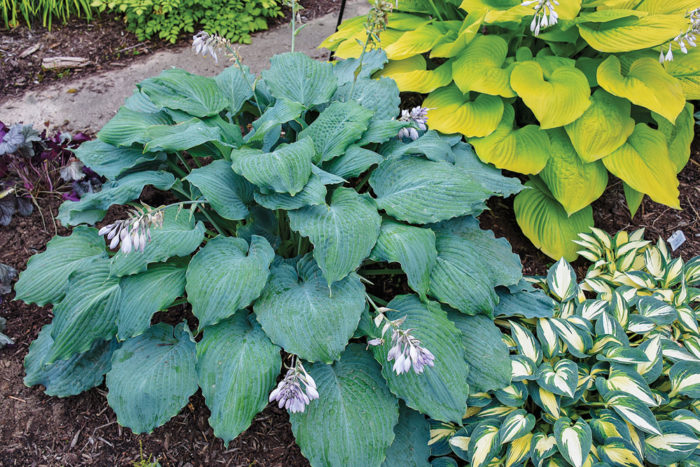
Who doesn’t love a big, blue hosta?
‘Diamond Lake’ hosta (Hosta ‘Diamond Lake’)
Zones: 3–9
Size: 17 inches tall and 45 inches wide
Conditions: Partial shade; moist, well-drained soil
Native Range: Asia
Nothing beats a giant hosta—except a giant blue hosta. ‘Diamond Lake’ holds its signature color even in a spot that gets a little more sun. No matter what color they were, its 11-inch-long, wrinkled leaves would be a textural dream. They will provide a hulking presence in a bed, but be sure to leave enough room.
Introduced by Proven Winners® and Walter’s Gardens
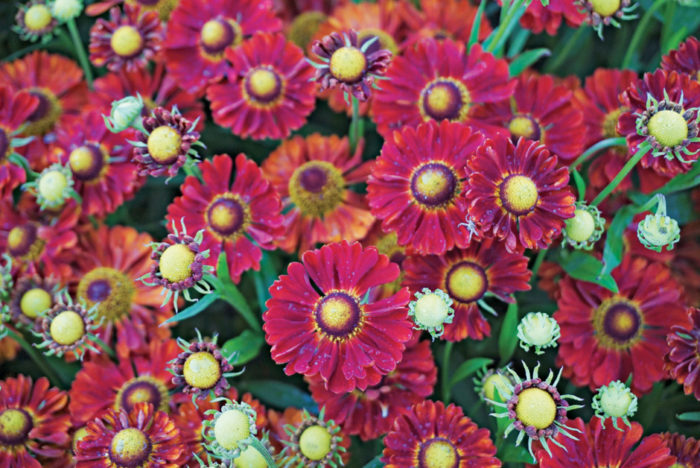
This true red doesn’t bleach out in full sun
‘Ranchera’ sneezeweed (Helenium autumnale ‘Ranchera’)
Zones: 3–9
Size: 2 feet tall and wide
Conditions: Full sun; moist, well-drained soil
Native Range: North America
Reds can be fleeting in a spot with full sun, but this sneezeweed holds its color throughout the summer. While other varieties tend to have a rust-red hue, ‘Ranchera’ has more of a deep lipstick-red shade. This as well as its rigid, flop-free stature make it a sure bet as a focal point in a bed.
Introduced by Plants Nouveau
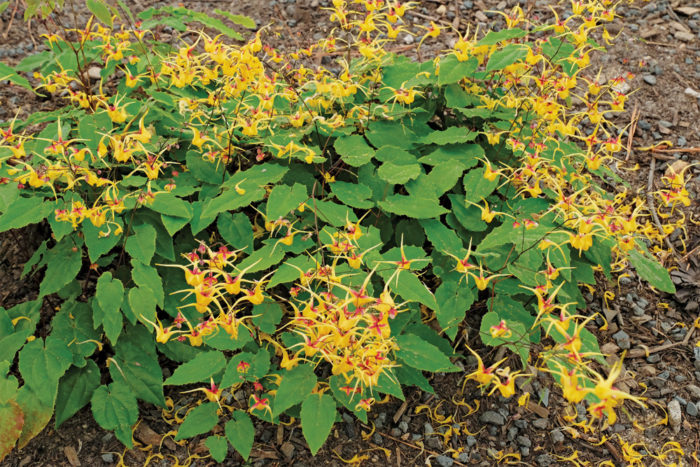
The one thing you’d change about epimedium—realized
‘Stoplights’ epimedium (Epimedium ‘Stoplights’)
Zones: 5–8
Size: 12 inches tall and 30 inches wide
Conditions: Partial shade; well-drained soil
Native Range: Asia
What’s not to love about a dry-shade-loving, disease-free, low-care perennial? In the case of epimediums, it has always been their sometimes less-than-showy blooms. ‘Stoplights’ breaks that mold with striking 12-inch-tall flower spikes held above the foliage. Each bloom is over an inch wide and is made up of a yellow spur, orange cup, and red outer sepals. One look and there will be no doubt how this plant got its name.
Introduced by Plant Delights Nursery
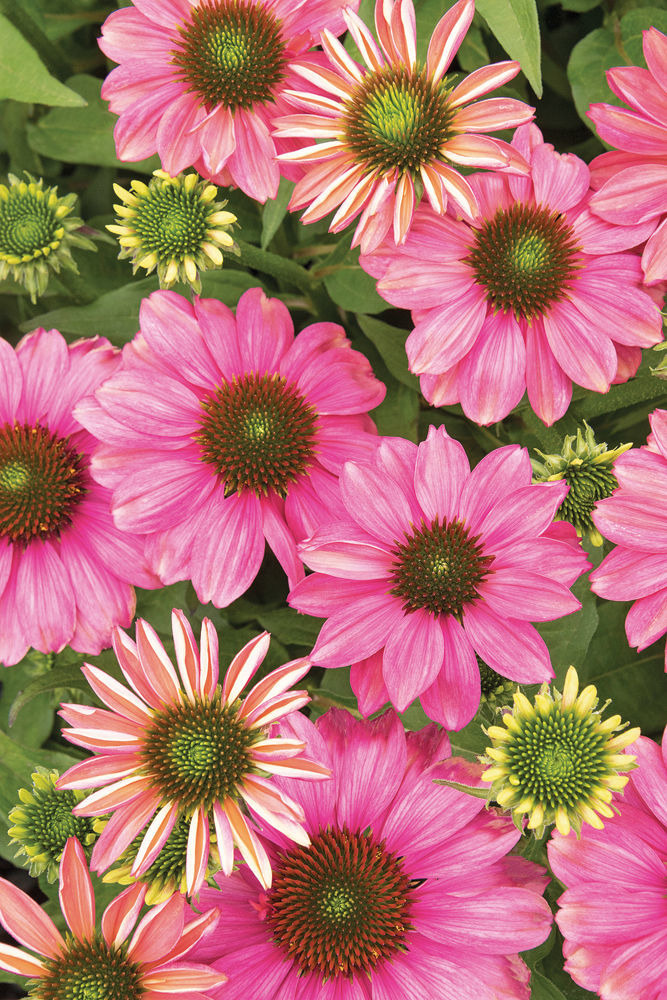
An interesting color combo on a classic favorite
‘Green Eye’ coneflower (Echinacea ‘Green Eye’)
Zones: 4–9
Size: 18 to 20 inches tall and wide
Conditions: Full sun; moist, well-drained soil
Native Range: North America
We’re used to seeing coneflowers with a brown eye and pink petals, so when this variety showed up with a bright green center, it caught our attention. Although not shocking, it is different. The plants mature to a bushy mound, and the ratio of blossoms to thick green foliage is nearly 1:1. And with flowers showing up from late spring through fall, ‘Green Eye’ seems to have long-lasting appeal.
Introduced by Monrovia®
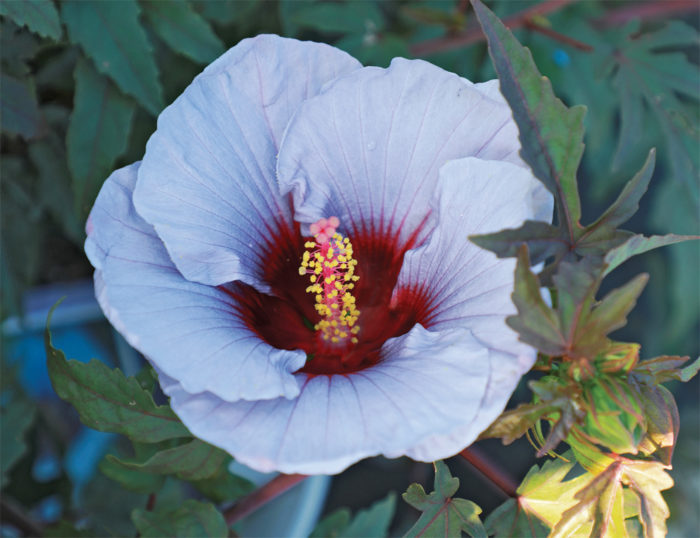
Don’t adjust your glasses; it is a blue hibiscus
Cordon Bleu hibiscus (Hibiscus moscheutos ‘4389’)
Zones: 5–9
Size: 3 feet tall and wide
Conditions: Full sun; moist, well-drained soil
Native Range: Southern and eastern North America
Blue is an elusive color in the garden, and while this hibiscus bloom isn’t “sky blue,” it does sport a lilac-blue hue. It will stop and make you pause, that’s for sure. The plant is also said to be bushier and more rust resistant than other hibiscus. If you’re in the market this year for bodacious blooms, this may well be your plant.
Introduced by J. Berry Nursery
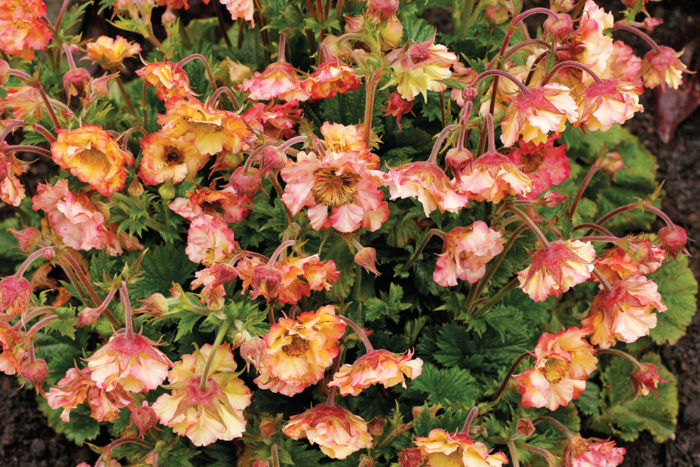
Another underused perennial with a new look
Pretticoats™ Peach geum (Geum ‘TNGEUPP’)
Zones: 5–9
Size: 10 inches tall and 20 inches wide
Conditions: Full sun; moist, well-drained soil
Native Range: Northern North America
For years we’ve been singing the praises of geum as a tough little perennial with minimal care needs. Pretticoats™ Peach just makes us even more in love with the genus due to the incredible amount of blooms it has. Starting in late spring and continuing into fall, they feature a combination of pink, yellow, and light orange. The habit of this variety is a bit denser, too, making it perfect for tucking in among other front-of-the-bed companions.
Introduced by Terra Nova® Nurseries
The hunt for new plants is part of the fun
“Why can’t I find it?” I wish I had a nickel for every time Fine Gardening gets a phone call or email with this question. Unfortunately, because these plant varieties are so new, it’s impossible for us to predict which mail-order sources, local garden centers, or seed catalogs will be carrying them before we go to print. Here are a few ideas, however, that may help in your search.
1. Start with the introducer. In many cases, the company that is promoting the plant in the first place will have a website that lists a retail location near you or an online nursery affiliated with its products.
2. Pull out your laptop. Here at Fine Gardening, many of our initial plant searches start with Google. And by the time this issue hits newsstands, the plants featured here may be available through many reputable mail-order nurseries. Do a quick search, and see what you find.
3. Try a university plant-finder service. This free service allows you to type in either the common or botanical name of the plant you are searching for and get a list of mail-order nurseries (both retail and wholesale) from which to buy it. For example, you can find the University of Minnesota’s plant-search tool at plantinfo.umn.edu.
Danielle Sherry is the senior editor.
Fine Gardening Recommended Products

A.M. Leonard Deluxe Soil Knife & Leather Sheath Combo
Fine Gardening receives a commission for items purchased through links on this site, including Amazon Associates and other affiliate advertising programs.



















Comments
Log in or create an account to post a comment.
Sign up Log in